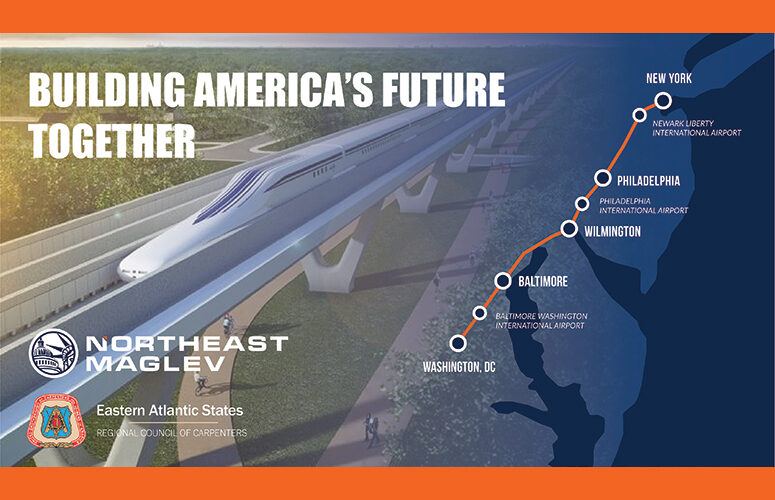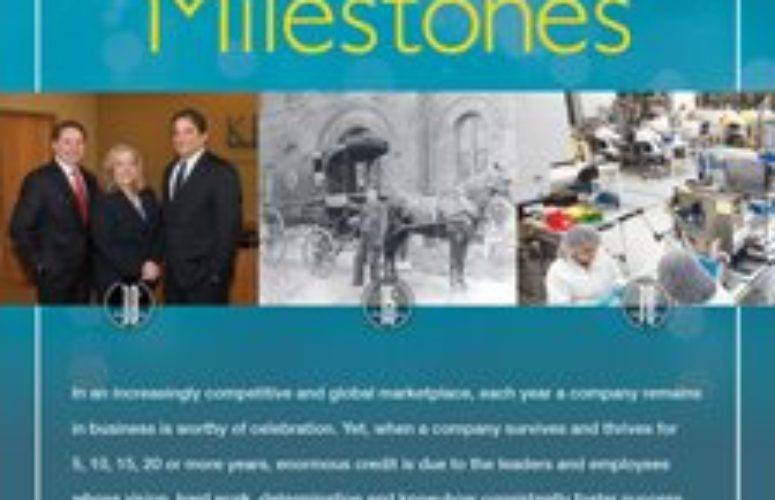
LSRPs Make Positive Change for New Jersey
Special Section
On Feb 27, 2017Compliance Averaging and You
By Kassidy Klink, PG, LSRP, Peak Environmental LLC
Compliance averaging is an approved alternative procedure for achieving compliance with applicable NJDEP remediation standards. It may help a remediator focus the work necessary to maintain the protectiveness of the remedy for human health and the environment.
With traditional single point compliance, each sample is compared to an applicable remedial standard. Single point compliance can potentially require multiple mobilizations and many samples. In contrast, compliance averaging may be conducted using existing data without the need for the collection of unnecessary samples.
NJDEP allows four types of compliance averaging, each of which has their own merits, applicable rules, and potential shortcomings. Prior to implementing an investigation or remedial action, plan your scope of work to include the number of samples necessary to potentially use multiple compliance averaging methods.
When compliance averaging is applied to soil, four different methods are available, but each has its own requirements. For example, the arithmetic mean method may be used only if you have nine or fewer total sample points or two or fewer distinct sample concentrations. Your LSRP will be able to review the methods and recommend the correct applications.
Compliance averaging for ground water is relatively simple. Following the collection of a sample with compounds greater than the applicable standard, you may collect two confirmation samples from the sample location within 60 days of the original sampling event. The results of the three samples may then be averaged, and then compared to the applicable remedial standards.
If the analyzed compounds are less than the applicable remedial standard and the initial sample concentrations is less than three times those standards, then the location is considered compliant. You may use this technique to compare to both the Ground Water Quality Standards and the Ground Water Screening Levels.
Compliance averaging can be helpful in closing sites and designing the appropriate remediation. Always keep complete and accurate records of project files and your rationale for any decision made and understand the positives of each technique and be cognizant of their limitations.
 Complex Excavation and Dewatering Design-Build Project
Complex Excavation and Dewatering Design-Build Project
By Peter Randazzo, LSRP, and Kevin Dyson, P.E, P.E., Brown and Caldwell
The NJDEP Site Remediation Program (SRP) provides a streamlined process for the selection of science-driven remedies for contaminated sites which are protective of human health and the environment.
The SRP assigns the development, oversight and approval for some site cleanup to state LSRPs who are rigorously trained in NJDEP regulations and guidance. The LSRP relies on various reference sources, site-specific data and scientific knowledge as well as the LSRP’s professional judgment to develop the remedy.
An operating facility in Passaic County with chlorinated volatile organic compound impacts in soil and groundwater had a history of remediation that pre-dated the SRP. Soil vapor extraction technology and pumping and treatment of groundwater were initially implemented, but failed to achieve the remedial objectives. A revised remedial plan for Electrical Resistance Heating (ERH) was prepared and submitted to NJDEP, and later withdrawn based on efficacy and safety concerns.
Under the oversight of the LSRP, Peter Randazzo, a new workplan was developed, proposing excavation and offsite disposal of soil as the remedy. The objective was to remove sufficient contaminant mass to allow for future remediation of groundwater by enhanced natural attenuation. Due to the depth of the excavation and the proximity to site operations areas and adjacent occupied residences, a shoring system was needed. Pre-remediation investigation delineated the extent of excavation and collected geotechnical information necessary for shoring system design.
To clear the work area, utilities present in the excavation were re-routed and old concrete foundations were removed. The excavation was securely shored and advanced to the top of bedrock (30 feet deep) and extended approximately 12 feet below the water table, which required dewatering. Previously backfilled clean soil was segregated for reuse and a total of 2,500 tons of impacted soil was excavated and disposed. Finally, an injection gallery for future groundwater remediation efforts was installed in the bottom five-feet of the excavation.
The key to successful implementation of this project was significant contaminant mass removal via soil excavation, which advanced the feasibility of Monitored Natural Attenuation (MNA) as a future groundwater remedy. Under the leadership of the LSRP and a streamlined regulatory process, the project was completed quickly and effectively, and was protective of on and off-site personnel and operations.
Emerging Contaminants and Professional Judgment
By Caryn Barnes, LSRP, Langan Engineering and Environmental Services, Inc. & Vice President of LSRPA
Emerging contaminants present challenges for the LSRP and the responsible parties, but there are steps that can be taken to plan for the future.
When we say emerging contaminants, we are talking about those constituents that are being considered for regulation, are newly regulated, or are being regulated at significantly lower levels due to evolving toxicity information and laboratory methods.
Many of these compounds are first brought to attention when they are found in regional water supplies, and when state and federal agencies are looking for potential sources.
To assess the risk of emerging contaminants, LSRPs and responsible parties need to scrutinize the operational and remedial histories of a site, identify the potential data gaps, address potential remedial responsibilities, determine if existing remedial actions are protective and identify potential future liabilities.
The process begins with basic questions. Do you have enough information to determine if the emerging contaminants were historically used, manufactured or stored at the site? If so, were these compounds included in historic sampling lists, were the sampling methodologies reliable and defensible, and were the reporting limits low enough? With these multiple lines of evidence, professional judgment can be exercised to support the determination of no further investigation or remediation.
Risk considerations must also be considered. Will future concerns over emerging contaminants likely be raised? What if the site is sold or a new discharge is reported? What if remedial standards for the emerging contaminant decreases?
The LSRP will also need to consider how close the detected concentrations are to potential human and ecological receptors (which may bring more scrutiny to the investigation), if previously conducted remedial actions are protective relative to the emerging contaminants, and if the closure documents sufficiently address the emerging contaminants.
What can the LSRP and responsible party do to predict the future and continue to protect human health and the environment?
A first step is to watch for trends in the US Environmental Protection Agency’s Unregulated Contaminant Monitoring Reports, as well as monitor the Contaminant Candidate List.
The LSRP should be aware of the chemicals being reviewed by the EPA under recent Toxic Substances Control Act reforms, including a list of 10 chemicals that were released in Novem6§§§§§£ber 2016, and watch for updates to the EPA’s toxicological database, the Integrated Risk Information System.
The LSRP may also consider keeping in contact with laboratories to understand how and when advances occur to sampling methodologies that will drive down standards. The one thing that is predictable is that there will continue to be changes in standards based on advances in science.
How’s Your RAP?
By Mark D. Fisher, CHMM, LSRP, Managing Partner of The ELM Group, Inc. and Past President of the LSRPA
Any environmental remediation that incorporates an engineering control (such as a cap) or institutional control (such as a deed notice) into its remedy must first obtain a Remedial Action Permit (RAP) from the NJDEP.
At times, the RAP has meant delays. However, the NJDEP is working with LSRPs to streamline the process.
A RAP is one of few formal approvals that an LSRP must obtain from the NJDEP as part of the remediation process, and typically occurs near the end of the process when the site is ready for regulatory case closure.
In the past, the regulated community has raised concerns about processing times for RAP, which can exceed six months, and the frequency of technical comments from the NJDEP. As part of the continuing effort to improve the Site Remediation Program, members of the LSRPA began meeting with NJDEP on a quarterly basis in 2016. These meetings have resulted in positive changes, but there is more work to do.
To reduce processing time, NJDEP added additional staff and improved workload allocation. A “first in, first out” approach is still applied, but NJDEP staff now attempt to streamline “easy” applications. To minimize administrative deficiencies that cause delays, the NJDEP also has developed checklists and “Helpful Hints” to assist LSRPs in preparing the RAP applications. RAP training held by LSRPA and CCNJ, with NJDEP instructors, has resulted in improved submittals.
The NJDEP also encourages LSRPs to promptly respond to questions and be clear if more time is needed. While RAP review and approval times have significantly improved, there are still instances when it may take over six months to obtain a RAP.
A NJDEP challenge to the LSRP’s conclusions can often protract the resolution process. The NJDEP encourages the use of cover letters or a phone call to explain technical details and rationale for decisions prior to submission.
In the future, the NJDEP will continue to refine its process with the goal of further improvements on permit processing times and will develop updated guidance documents for both soil and groundwater RAPs. This guidance will address applications, permit compliance, modifications, transfers and terminations.
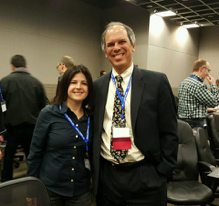
Ben Alter, Scholarship Committee Chair, with Liliana Calderon, Montclair State University student and scholarship recipient
LSRPA Awards 2016 Elmeryl Davies Memorial Scholarships
By Benjamin Alter, LSRP, GZA GeoEnvironmental, Inc.
In December 2016, the LSRPA announced that five highly qualified college students each received a $2,000 Elmeryl Davies Memorial Scholarship. The LSRPA scholarship is named after the late wife of LSRPA founding member Julian Davies. Elmeryl Davies, a scientist and educator, suffered an untimely death in 2014.
To qualify for the scholarship, students must be juniors or seniors of a four-year accredited geoscience or engineering program who are interested in pursuing a career in the environmental field. The applicants are evaluated based on their academic achievements, their work experience and involvement in other activities, academic and professional references, and a statement of their career goals.
Here are the five recipients of the 2016 Elmeryl Davies Memorial Scholarships:
- Dayana Arrue is a junior at Rutgers-Newark majoring in geoscience engineering and mathematics.
- Alexander Gmunder is a senior at William Paterson University majoring in environmental science.
- Catherine (Casey) Ivanovich is a senior at Princeton University majoring in geosciences.
- Hasan Redwan is a senior at Rutgers-Newark pursuing a dual curriculum in geoscience engineering and geology.
- Tonian Robinson is a senior at Rutgers-Newark majoring in geoscience and environmental science.
The LSRPA congratulates each of the awardees, and wishes them success in their promising careers as environmental professionals.
The Discharge Reporting Myth
By Rodger A. Ferguson, Jr., LSRP, President, PennJersey Environmental Consulting & Vice President, LSRPA
Some organizations continue to believe a persistent myth that an LSRP is required to report all discharges to the NJDEP hotline. As a result, the use of an LSRP to undertake due diligence or other on-site environmental consulting tasks is being precluded unnecessarily by purchase contracts by the seller or by the facility operator. The facts about discharge reporting are as follows:
Under the New Jersey Spill Compensation and Control Act and NJDEP’s regulations, the owner or operator has always had the obligation to report a discharge, regardless of whether they have an LSRP. An exception is the NJDEP’s Underground Storage Tank (UST) regulation, which requires the subsurface evaluator to report discharges observed during the investigation or closure of an UST.
The Site Remediation Reform Act (SRRA), which created the LSRP program, differentiated the LSRP’s reporting obligations, and made an important exemption:
Under SRRA, an LSRP may observe a discharge during due diligence for a prospective purchaser, but is not required to report it to NJDEP. The reporting obligation remains with the owner or operator.
SRRA requires that the LSRP report discharges not previously known to NJDEP “…at sites for which he/she is responsible,” i.e., the LSRP has been retained to perform the remediation of an area of concern or the entire site. NJDEP has confirmed that an LSRP retained for a specific area of concern is not required to report a discharge on another part of the property. LSRPs performing non-remediation related services, such as geotechnical engineering, air permitting, or site planning, also are not required to report a discharge.
SRRA requires that an LSRP report all Immediate Environmental Concerns (IECs) not previously known to NJDEP, regardless of whether the LSRP is responsible for the site. Without reliable laboratory data, IECs are not readily discernable, and are highly unlikely to be encountered during due diligence or other non-remediation related site work.
With a more sophisticated understanding of SRRA, the educated buyers and sellers may dispel the reporting myth and hire the experts of site remediation, the LSRP. LSRPs are not required to report discharges during due diligence, and LSRPs are not required to report discharges while performing other environmental services, if the LSRP has not been retained to remediate contamination at a site. There is no reason to preclude the LSRP as an environmental professional to perform due diligence.
Work Well with Your LSRP
By Charlene Drake, LSRP, Langan Engineering and Environmental Services, Inc.
Today, New Jersey has more contaminated and underutilized sites being remediated than at any other time in its history, and many of those sites are being developed for new use.
So, maintaining a good relationship with an LSRP is important for a successful project. An LSRP is an experienced environmental consultant licensed by the State of New Jersey to be responsible for environmental remediation and guide a responsible party through the remediation process. Here are the Top 5 behaviors that lead to a successful client and consultant relationship:
- Communication is key between project participants and your LSRP. In land development, this includes your geotechnical, architect and general contractor. For ongoing compliance work, it includes your facility personnel, legal and risk management team.
- Share your business objectives with your LSRP, and hire an LSRP who understands them.
- Understand the limitations and obligations of the LSRP’s license and requirements, and the timelines necessary to comply with rules and regulations.
- Set the expectations for how you can best be reached, what type of communication you prefer, and how often.
- Don’t let anyone “blind you with science” acronyms or imprecise language. Ask questions and insist that the conversation be put in terms that make sense to you. A good LSRP will be able to do this for you.
The goal of any remediation project is to improve the site for future beneficial use. These tips help ensure effective teamwork.
 Tools for Site Closure
Tools for Site Closure
By Theodoros “Ted” Toskos, Principal Geologist, PG, LSRP, Amec Foster Wheeler Environment & Infrastructure, Inc.
At last count, 24 guidance documents developed by the NJDEP, stakeholders and remediation professionals detail the information and tools for site investigation and remediation. Here are a few of the key tools utilized by the LSRP to arrive at site closure.
Incremental Sampling Methodology (ISM) – The Site Investigation/Remedial Investigation/Remedial Action Technical Guidance formally recognizes this application. ISM is a structured composite sampling protocol that reduces data variability and provides a reasonably unbiased estimate of mean contaminant concentrations in a volume of soil targeted for sampling. Practitioners can now use this method to characterize large variable areas that previously required extensive discreet sampling.
Soil Remediation Standards (SRSs) – There is an entire webpage of technical guidance devoted to Soil Remediation Standards (SRSs). Here the LSRP will find an array of tools that can be used to fine-tune SRSs to match site conditions.
Conceptual Site Model (CSM) – The NJDEP has presented a framework for the development of a CSM. The CSM is an overview and closure strategy development tool, allowing the LSRP to visualize the interrelation of the various elements of a site and its vicinity, test the effects and effectiveness of a remediation strategy, and make intelligent choices without the pitfalls of older trial-and-error techniques.
Technical Impracticability – This guidance proposes a framework for demonstrating and managing situations, such as remediating deep bedrock aquifers contaminated with chlorinated solvents when current technologies are not capable of meeting remediation standards.
LSRPA Profile
By Candace Baker, LSRP Langan Engineering and Environmental Services, Inc.
Erin Palko, an LSRP and licensed geologist, is a Senior Managing Scientist at Integral Consulting, Inc. Her career in environmental consulting has spanned 18 years and several states including New Jersey.
What you wouldn’t know from looking at her resume is that Ms. Palko is an avid volunteer in her community. Ms. Palko began volunteering for The FAF Coalition about 5 years ago. The FAF started out as a Fall Arts Festival, but has expanded into an organization for creative place making and opening people up to experience art in its various forms.
In their own words, The FAF Coalition “champions initiatives rich in arts, culture, and sustainable design as a catalyst for community development and economic revitalization.”
Ms. Palko first started out by recruiting volunteers and coordinating the information booth at the Fall Arts Festival. Most recently, Ms. Palko has contributed to the creation of Lot 323, which was a parcel of unused space in downtown Woodbury that the FAF has revitalized.
Ms. Palko has helped rejuvenate this space through good old-fashioned elbow grease. She is proud of the colorful fence she painted and the seats she created out of recycled tires. Lot 323 is now a semi-permanent “pop up” park in downtown Woodbury complete with a stage and areas for children’s play and craft activities.
On Fridays during this past summer, it was a gathering place for the community who come to enjoy free live music and local food and beverage vendors. For more information, please visit www.thefaf.net.
The Benefits Of Using an LSRP on Due Diligence Projects
By Raymond J. Minarovic, P.G., LSRP, T&M Associates
Should potential developers or purchasers of land use a LSRP to perform environmental due diligence? Some advisors might say no, but the answer is certainly yes.
Although New Jersey does not require it, hiring an LSRP to perform due diligence or a preliminary assessment ensures the proper foundation for developing an environmental investigation. Observations made during a preliminary assessment are relied upon throughout the duration of a remediation project.
The weight of these decisions and observations, and associated liability, should not be placed on inexperienced professionals, but should merit the use of an LSRP. A client should want an experienced professional to perform the preliminary assessment, especially when the consequences of a deficient report could be costly to a transaction.
The decision not to use an LSRP on Phase I ESA/PA projects could result in additional or unforeseen work that was not identified by a non-LSRP. If an LSRP is contracted after the preliminary assessment is performed, the following problems could occur that could significantly change the project cost or direction.
- The LSRP may not agree with the findings of the preliminary assessment potentially requiring amendments or greater revisions to the existing documents.
- The LSRP may identify additional areas of concern that could add to unplanned remediation costs.
- The LSRP may deem the preliminary assessment deficient and unreliable, potentially requiring the complete replacement of these documents.
Both a buyer and a seller can be confident that the LSRP has identified all possible environmental concerns and the preliminary results are reproducible. They can be confident that the results meet New Jersey quality assurance and quality control. The buyer and seller can also be confident that there would be little chance of uncovering unidentified environmental concerns during site redevelopment that could add significant cost to a project, for both parties.
Whether to use an LSRP on due diligence projects in New Jersey will always be questioned by some. But no specific qualifications are required by the State of New Jersey for those conducting due diligence investigations who are not LSRPs.
Using an LSRP for due diligence ensures a level of professionalism and quality assurance. A client should feel comfortable and confident that choosing an LSRP to perform due diligence is always a good choice.
 Environmental Investigations in New Jersey: Special Challenges Encountered in Urban Areas
Environmental Investigations in New Jersey: Special Challenges Encountered in Urban Areas
By Christopher Reitman P.E., Joseph Chiappetta LSRP, Chris Valligny LSRP, and Rick Shoyer LSRP, Advanced GeoServices Corp.
Revitalization of urban areas is big business with often unexpected challenges. But developers and LSRP can work together to tackle these challenges with advanced planning. Here are just a few common challenges and solutions.
- Challenge # 1: Urban Space
Small lots, narrow streets and underground utilities may prevent access for typical drilling equipment. Drilling targets in sidewalks or roads may require permits, financial bonding, restoration requirements, and expensive traffic control.
Solution: New drilling equipment, including rigs with removable masts or miniature rigs that can run in a basement, can allow borings inside buildings and in lower traffic areas. Experienced drillers, municipal officials and utility location services should be consulted to identify utility lines and road-opening permit requirements. Services for soft digging around utilities are essential.
- Challenge # 2: Unexpected Groundwater Flow or Vapor Migration Patterns
Land cover, high-permeability backfill, sump pumps, subsurface features or leaky sewers may create irregular flow patterns that make it difficult to determine the source of contamination or to predict where contamination in groundwater or vapors may travel.
Solution: Your LSRP should obtain information from third parties to identify utilities, potential fill material, filled stream channels, slab penetrations and other potential factors. More data may be required to account for variability.
- Challenge # 3: Obtaining Access from a Neighbor
If work is necessary on a neighboring property, property owners may be reluctant to grant access. Legal action to obtain access may cause months of delays and costly attorney fees.
Solution: Neighboring property owners should be contacted as early in the process as possible. Be clear from the start how the site will be restored, what data you can share with them, and what discoveries the LSRP is obligated to report to the NJDEP. Factor in an appropriate timeline and costs associated with this process.
- Challenge # 4: Other Sources of Contamination
Your site may be impacted by off-site sources of contamination. It is even more complex when your contamination is similar to the other site’s contamination.
Solution: Your LSRP should use published information and collect data to identify known issues, establish the “background” site conditions, and identify the direction and rate of contaminant travel. If an environmental investigation was done, it may be possible to use the other property’s existing monitoring wells in your investigation. The LSRP also can explore newer analyses to more accurately differentiate between different sources of the same chemicals.
Urban development, with limited budget and tight timelines, can be complicated. But LSRPs, by being proactive, can keep developers, clients, neighbors, tenants, and other parties informed of options to make remediation and the project a success.
The LSRPA Sounding Board: Year One
All members of the LSRPA can use the “Sounding Board,” a unique and valuable service for confidential peer-to-peer questions. Marking its one-year anniversary, Sounding Board has now fielded about 40 questions on a wide range of issues.
Many of the questions, including technical issues, regulatory clarification, liability concerns, and ethics, are complex. Participants in Sounding Board sift through the facts presented to reach consensus. The service is free and confidential.
The Sounding Board portal offers users a choice regarding the urgency of their question. The scale runs from slow to very urgent. As is often the case in consulting, most users have urgent needs. The question is logged in and immediately distributed to more than seven professionals, triggering an internal debate.
Despite the everyday demands of project work, Sounding Board members rally to a consensus. As one user stated, “It’s incredibly helpful to present a question and know that there is a volunteer team of LSRPs that are willing to assist.”
A somewhat intangible issue is the appropriate “standard-of-care” in site remediation. Because each case has different hazards, physical setting and potential sensitive receptors, the appropriate standard of care is not always clear cut. The Sounding Board process offers consistency, collaboration among peers, and combined knowledge gathered from many years of practical experience that is invaluable in discerning the appropriate standard-of-care.
If you have attended an LSRPA Member Breakfast, you have been exposed to a Sounding Board-type experience. At the breakfasts, members are encouraged to present questions and concerns in an open forum. The Sounding Board takes the process several steps further, offering one-on-one feedback, confidentiality, and an in-depth, fast-paced analysis of the question. Users are given an opportunity to speak in detail to an LSRP that is well-versed to address their specific question.
The participating Sounding Board members also gain from the collaborative process. Several LSRPA members have expressed interest in joining the Sounding Board to expand their own knowledge of site remediation.
Interest in the Sounding Board also has crossed state borders. The counterpart of the LSRPA in Massachusetts is considering a similar program for its members.
Related Articles:



 Complex Excavation and Dewatering Design-Build Project
Complex Excavation and Dewatering Design-Build Project 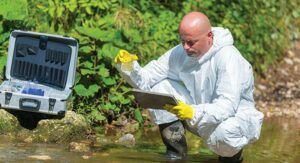 Tools for Site Closure
Tools for Site Closure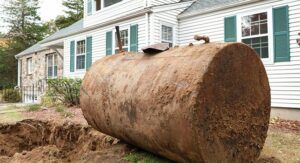 Environmental Investigations in New Jersey: Special Challenges Encountered in Urban Areas
Environmental Investigations in New Jersey: Special Challenges Encountered in Urban Areas
